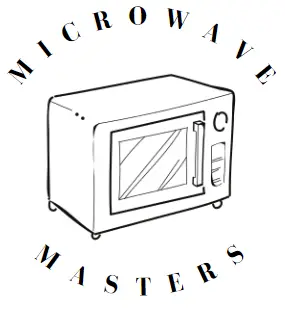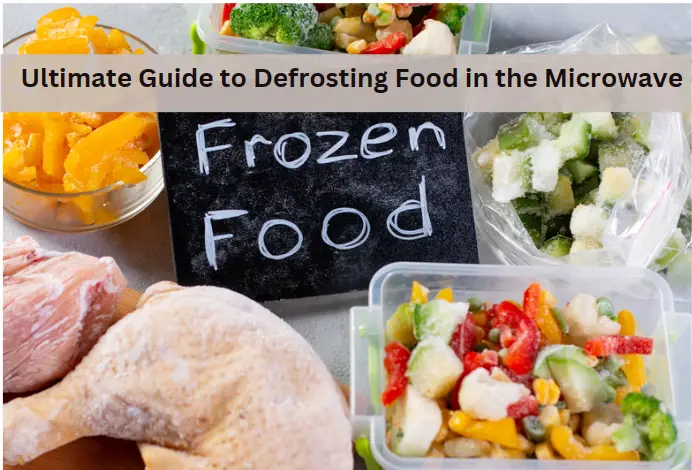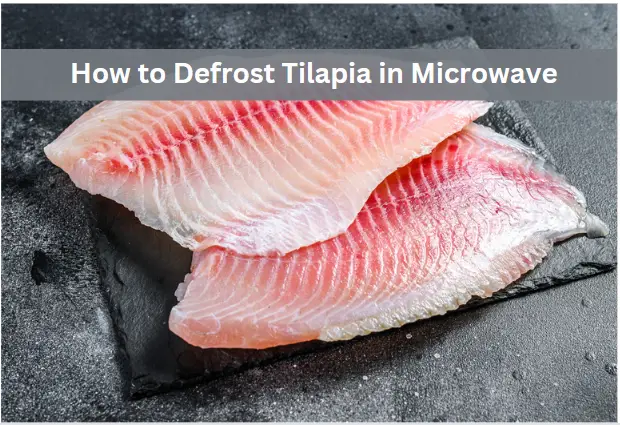Ultimate Guide to Defrosting Foods in the Microwave: Easy and Efficient
I’ve always found defrosting foods to be a bit of a challenge, especially when I’m in a hurry. That’s when my microwave becomes my best friend. Knowing how to defrost foods properly in the microwave can save us time, prevent foodborne illnesses, and retain the quality of our meals.
So, let’s dive into the art of microwave defrosting.
Ultimate Guide to Defrosting Foods Properly in the Microwave
In my experience, one of the first steps to mastering microwave defrosting is to understand the different thawing techniques suitable for various types of food. From frozen meats to vegetables and even delicate pastries, each type of food requires careful handling to defrost in the microwave without compromising its taste, texture, or safety.
Over the years, I’ve learned about the importance of using proper wattage levels and adjusting defrosting time depending on the food’s weight, thickness, and even its dielectric properties. Research shows that effectively defrosting food in the microwave is influenced by factors such as wave guide dimensions and the dielectric properties of the food material. With the right knowledge, we can all make the most of our microwaves and defrost foods with ease and efficiency.
Understanding Microwave Defrosting
The Science Behind Microwave Defrosting
You might be wondering how microwaves can defrost food quickly and evenly. Let me enlighten you! When I use my microwave to defrost food, it involves a combination of a magnetron and the microwave’s defrost setting. The magnetron inside the microwave generates microwaves to heat up the water molecules in the food. The defrost setting reduces the wattage of the microwave, ensuring that the frozen food thaws slowly and evenly without cooking it.
Different microwave models come with varying power levels and wattage. It’s important to know your microwave’s wattage for the best defrosting results. Generally, lower wattage models might take longer to defrost, while higher wattage models are more efficient and quicker.
Benefits of Defrosting in the Microwave
As someone who loves cooking, I am always excited to share the benefits of defrosting food in the microwave:
- Speed: The microwave is simply faster compared to other defrosting methods, meaning you can get to cooking and eating quicker!
- Convenience: Defrosting in the microwave is easy and mess-free. Just place the frozen food in a microwave-safe dish, select the defrost setting, and the microwave does the rest.
- Safety: Defrosting food in the microwave minimizes the risk of bacterial growth that may occur when using other methods, like defrosting on the countertop.
Keep in mind that microwave defrosting isn’t ideal for all food types, such as large cuts of meat. However, for most daily cooking needs, defrosting using my microwave has been a real game changer!
Preparing Foods for Microwave Defrosting
Selecting the Right Packaging
When I’m defrosting food in the microwave, choosing the right packaging is essential to ensure safety and efficiency. I always consider using microwave-safe containers to avoid any risk of melting or damage to the food. Usually, I prefer glass containers or microwave-safe plastic containers, as they are specifically designed to withstand microwave heat without releasing harmful substances.
Here are some tips I follow when selecting the right packaging for microwave defrosting:
- Look for packaging marked as “microwave-safe” on the label or symbol;
- Avoid using plastic containers without a microwave-safe label, as they might release harmful chemicals;
- When using glass containers, make sure they don’t have any metallic parts or decorations, which could cause sparks in the microwave.
Using Kitchen Tools for Accurate Weighing
Since microwave defrosting times depend on the weight of the food, having the right kitchen tools to weigh them accurately is crucial. I use a kitchen scale to measure the weight of the food before defrosting it in the microwave. This helps me determine the appropriate defrosting time needed to thaw the food evenly.
To weigh the food items, I follow these simple steps:
- Place the microwave-safe container on the kitchen scale and tare it (reset it to zero);
- Place the frozen food into the container without exceeding its capacity;
- Note down the food’s weight displayed on the kitchen scale, as it will be needed to set the defrosting time.
By using these methods and tools, I can ensure a safe and efficient way to defrost my foods in the microwave. The right packaging and accurate weighing contribute to a more precise and consistent defrosting process, making my meal preparation even more enjoyable!
Step by Step Guide to Defrosting in the Microwave
When it comes to defrosting food, the microwave can be a real game-changer. I am excited to share this easy step-by-step guide on how to defrost various foods in the microwave properly.
Defrosting Meat
I find defrosting meat in the microwave to be a real time-saver, especially when I forget to take it out of the freezer earlier. Here’s how I do it:
- Remove the meat from its packaging and place it on a microwave-safe plate.
- Refer to the microwave thawing table below for recommended defrost times based on the weight of meat.
- Set the microwave to the defrost setting or a low power setting, usually around 30%.
- Defrost the meat, checking its progress every few minutes. I always use a food thermometer to ensure it’s thawing evenly and not starting to cook.
- Once thawed, cook the meat immediately to avoid any bacterial growth.
| Weight | Time |
| 1 to 2 lbs | 4 to 6 minutes |
| 3 to 4 lbs | 13 to 15 minutes |
| 5 to 6 lbs | 20 to 24 minutes |
| 7 to 8 lbs | 28 to 32 minutes |
Defrosting Frozen Vegetables
I love keeping frozen vegetables on hand for a quick and healthy addition to my meals. Defrosting them in the microwave is a breeze:
- Place the frozen vegetables in a microwave-safe bowl.
- Add a tablespoon or two of water to help create steam during the defrosting process.
- Cover the bowl with a microwave-safe lid or plate, leaving a small gap for steam to escape.
- Microwave the vegetables on high for one to two minutes, checking halfway through to mix and ensure even thawing.
- Drain any excess water, and they’re ready to be cooked or used in your favorite recipe!
| Weight | Time |
| 1 lb | 2 minutes |
| 2 lb | 3 to 4 minutes |
| 3 lb | 4 to 5 minutes |
| 4 lb | 5 to 6 minutes |
Defrosting Leftovers
Whether it’s last night’s casserole or my signature pasta dish, here’s how I safely defrost leftovers I have in the freezer in the microwave:
- Transfer the leftovers to a microwave-safe plate or bowl, spreading them out evenly.
- Cover the container with a microwave-safe lid or plate to help retain moisture during the defrosting process.
- Set the microwave to defrost or a low power level, usually around 30%, to prevent the food from drying out or cooking unevenly.
- Defrost the leftovers, checking and stirring every 2 to 3 minutes to ensure even thawing. Be sure to use a food thermometer to check the temperature.
- Once thawed, reheat the leftovers on a higher power setting until they reach a safe temperature of 165°F (74°C).
I find these simple defrosting steps in the microwave to be quite helpful, saving me time, and ensuring my food is safely thawed and ready to be enjoyed. Happy defrosting!
Ensuring Food Safety During Defrosting
Avoiding the Danger Zone
One of my top priorities when defrosting food in the microwave is ensuring food safety! Bacteria can easily multiply between 40°F and 140°F, which is known as the “danger zone.” That’s why it’s crucial to keep food out of this temperature range as much as possible. I always make sure to:
- Use the microwave’s defrost button, which ensures even heating and prevents the formation of hot spots where bacteria can grow.
- Cook defrosted food immediately after thawing, minimizing the time spent in the danger zone.
Defrosting Time
When it comes to defrosting meals in the microwave, size definitely matters. The larger the cuts of meat or the deeper the containers, the more time it takes to defrost thoroughly. For instance:
- 2 pounds of boneless chicken breasts might take 10 minutes to defrost.
- Frozen pizza might need more time depending on its size and thickness.
To avoid the danger zone while defrosting, it’s essential to pay attention to the defrosting time. I always use the defrost feature or power level button on my microwave and adjust the time based on the food’s size.
Remember, the USDA does not recommend refreezing defrosted food if it remains in the danger zone for more than two hours.
Proper Flipping Techniques
Microwave ovens sometimes heat food unevenly, so it’s essential to flip food during defrosting. Proper flipping techniques help ensure that the internal temperature reaches a safe range and reduces the risk of bacterial growth. Here’s what I do when defrosting raw meat, soup, or stew:
- Start the defrost process in the microwave using the defrost option and the recommended defrost time.
- Pause halfway through the defrost time to flip, rotate or stir the food to ensure even heating.
- Resume defrosting and monitor the process closely.
After defrosting, I always check the internal temperature of the food with a thermometer to make sure it’s out of the danger zone.
That’s how I ensure food safety and proper defrosting even when using a kitchen appliance like a microwave oven. Happy defrosting and enjoy your meals!
Additional Tips and Tricks for Defrosting Foods in the Microwave
I’ve learned some fantastic tips and tricks for defrosting foods in the microwave, and I’m excited to share them with you! These techniques will help you defrost your favorite meals quickly and safely, so you can enjoy deliciously warm dishes in no time.
One of the best pieces of advice I can give is to rearrange the food as it defrosts. Doing so helps the food thaw more evenly, especially if there’s a significant amount of ice on particular areas. If you’re defrosting something flat like a steak, keep flipping it every so often to maximize exposure to the microwaves.
Being mindful of the microwave’s power settings is key. Lowering the power of your microwave during defrosting will ensure that your food doesn’t start steaming as it thaws. I usually set the power level to 30% to effectively thaw food without accidentally cooking it.
If you’re dealing with leftovers or pre-cooked foods, here’s a useful tip I discovered: cover the dish with a microwave-safe lid or plastic wrap. This will prevent moisture from getting lost and help the food heat more evenly. Just make sure to leave a small opening for the steam to escape.
To avoid harmful bacteria growth, I also recommend timing the defrosting process properly. This is especially important when it comes to meats, poultry, and seafood. If an item isn’t completely defrosted, harmful bacteria could thrive. To be safe, I always check the food’s temperature using a food thermometer, aiming for 40°F or below.
Finally, miscellaneous helpful tips:
- When defrosting a large item, try cutting it into smaller sections.
- Use a microwave-safe, flat dish to prevent the food from sliding.
- If the food is in a bag or plastic container, transfer it to a microwave-safe dish before defrosting.
- Defrosting times can be deceiving, so always double-check the food’s temperature or feel the center to confirm it’s thawed.
- Listen to your microwave’s recommendation for defrosting times, but make adjustments based on your model’s wattage.
Follow these tips and tricks, and your microwave will become your best friend when it comes to defrosting foods quickly and efficiently!
Related Posts:








